Moderately strong M2.7 solar flare erupts from Region 2838
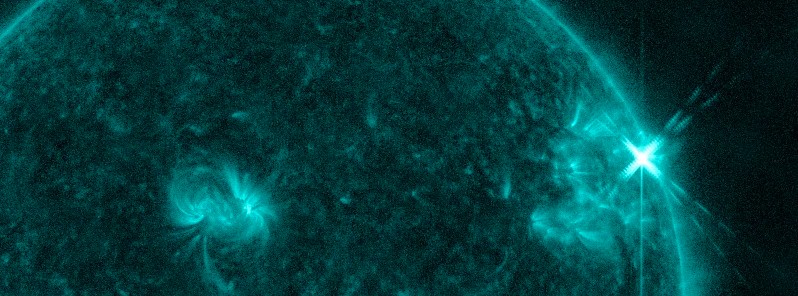
A moderately strong solar flare measuring M2.7 at its peak erupted from the newly-formed Active Region 2838 on July 3, 2021. The event started at 07:04 UTC, peaked at 07:17, and ended at 07:22.
The position of this region does not favor Earth-directed coronal mass ejections.
"An M-flare player is growing fast," Dr. Tamitha Skov said minutes after the eruption. "A new region on the Sun's west limb has grown incredibly rapidly over the past day."
"The new sunspot cluster becomes a big flare player with a Radio Blackout on Earth's dayside," Skov added.
"Expect amateur and emergency radio comms issues, especially in Australia, Asia, Europe, East Africa. GPS reception also spotty near dawn and dusk (blue and purple regions in the map)."
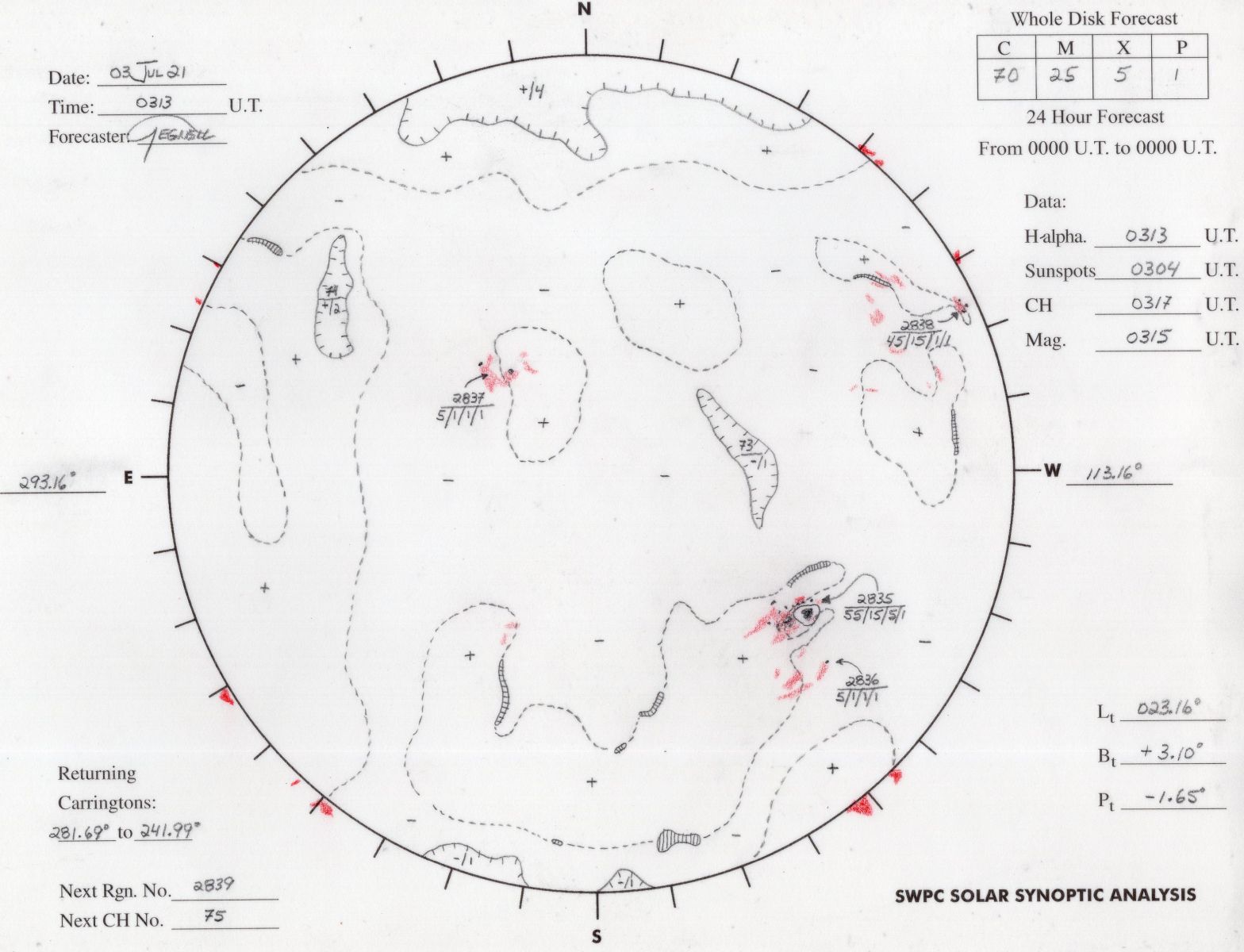
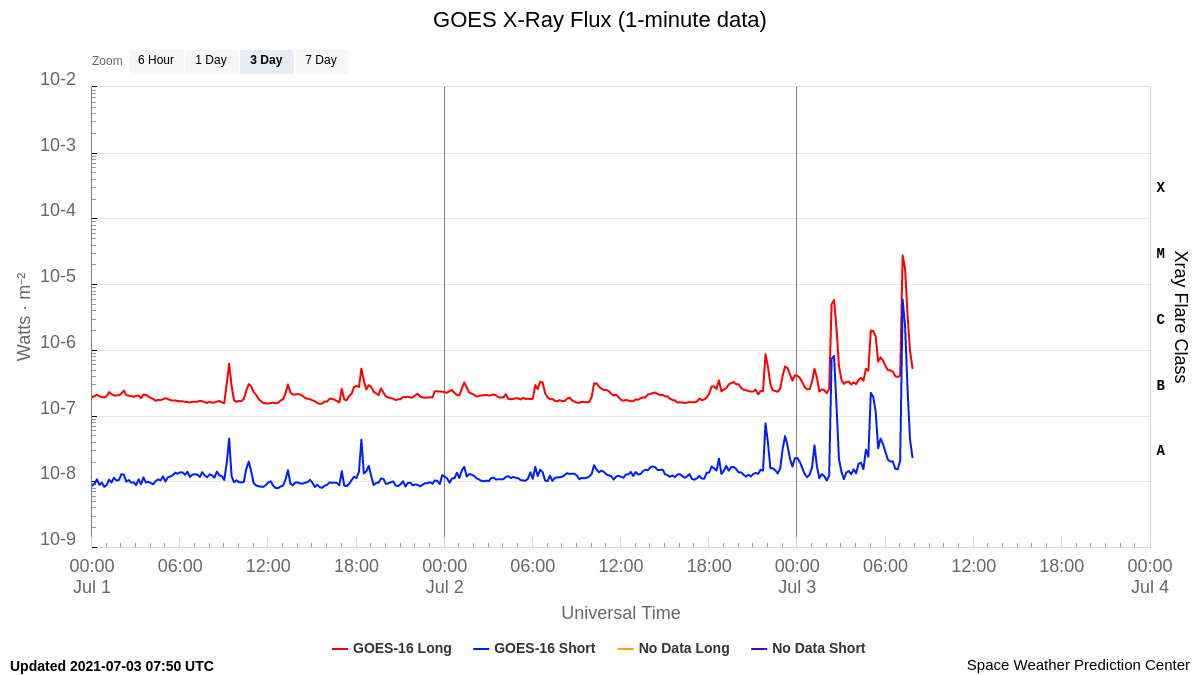
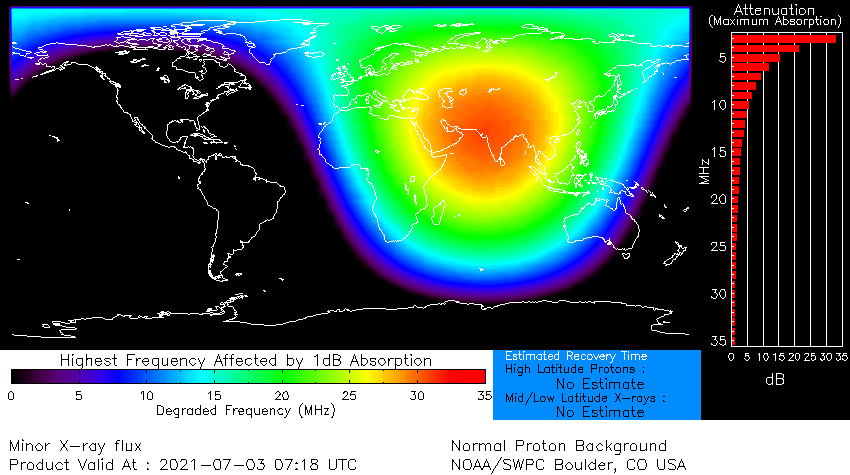
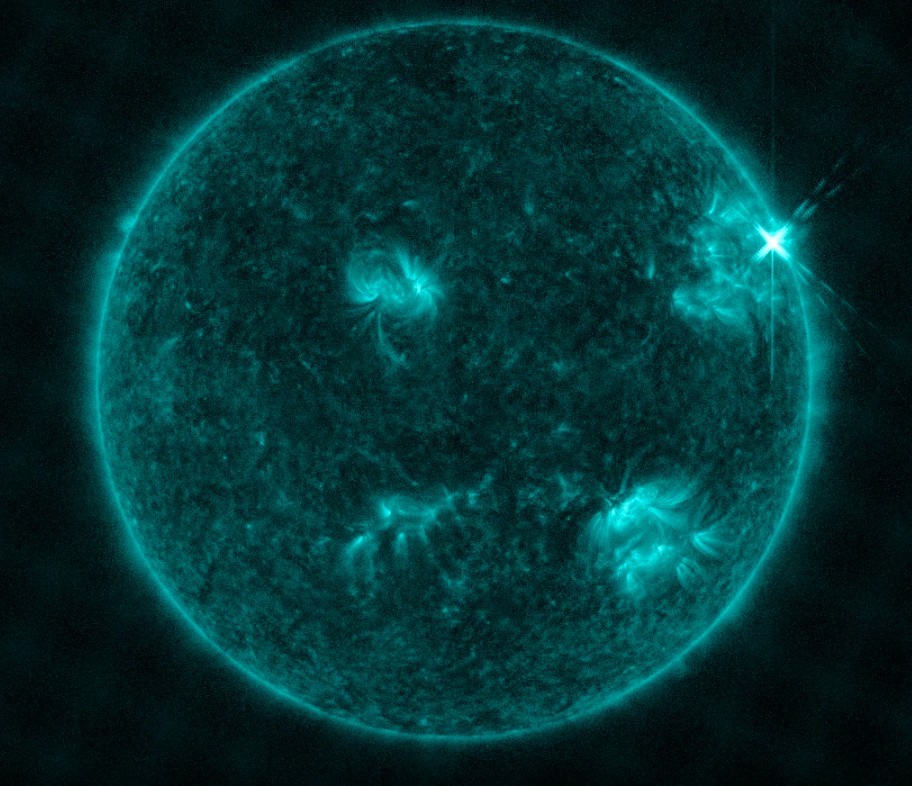
Image credit: NASA SDO/AIA 131. Acquired at 07:15 UTC on July 3, 2021
Solar activity was very low on July 2.
B-class flaring was observed from Regions 2836 (S26W36, Axx/alpha) and 2837 (N17E15, Dro/beta). Slight decay was observed in Region 2836 and the trailing spots of Region 2835 (S18W29, Dkc/beta-delta). Region 2835 developed a weak delta as the main penumbral area connected with some of the intermediate spots while Region 2837 grew slightly.
Other activity included an eruptive prominence observed off the NW limb in GOES SUVI 304 imagery beginning at 14:01 UTC. An associated CME was observed in SOHO LASCO C2 imagery beginning at 15:36 UTC.
"Modeling of this CME will commence as further imagery becomes available. However, due to its location beyond the NW limb, it will likely not have a geoeffective component," SWPC forecasters noted.
Solar wind parameters were slightly enhanced on July 2. Wind speed ranged from 414 – 499 km/s while the total field was between 3 – 7 nT. Phi showed a boundary crossing into a negative sector at 14:18 UTC.
Solar activity is likely to be low with a slight chance for M-class (R1-R2, Minor-Moderate) radio blackouts through July 5 due to the magnetic complexity of Region 2835.
While we still might see some action from Region 2838, it will soon start its farside rotation and return back to Earth-view in about 2 weeks.
Featured image: M2.7 solar flare on July 3, 2021. Credit: NASA SDO/AIA 131

Very interesting